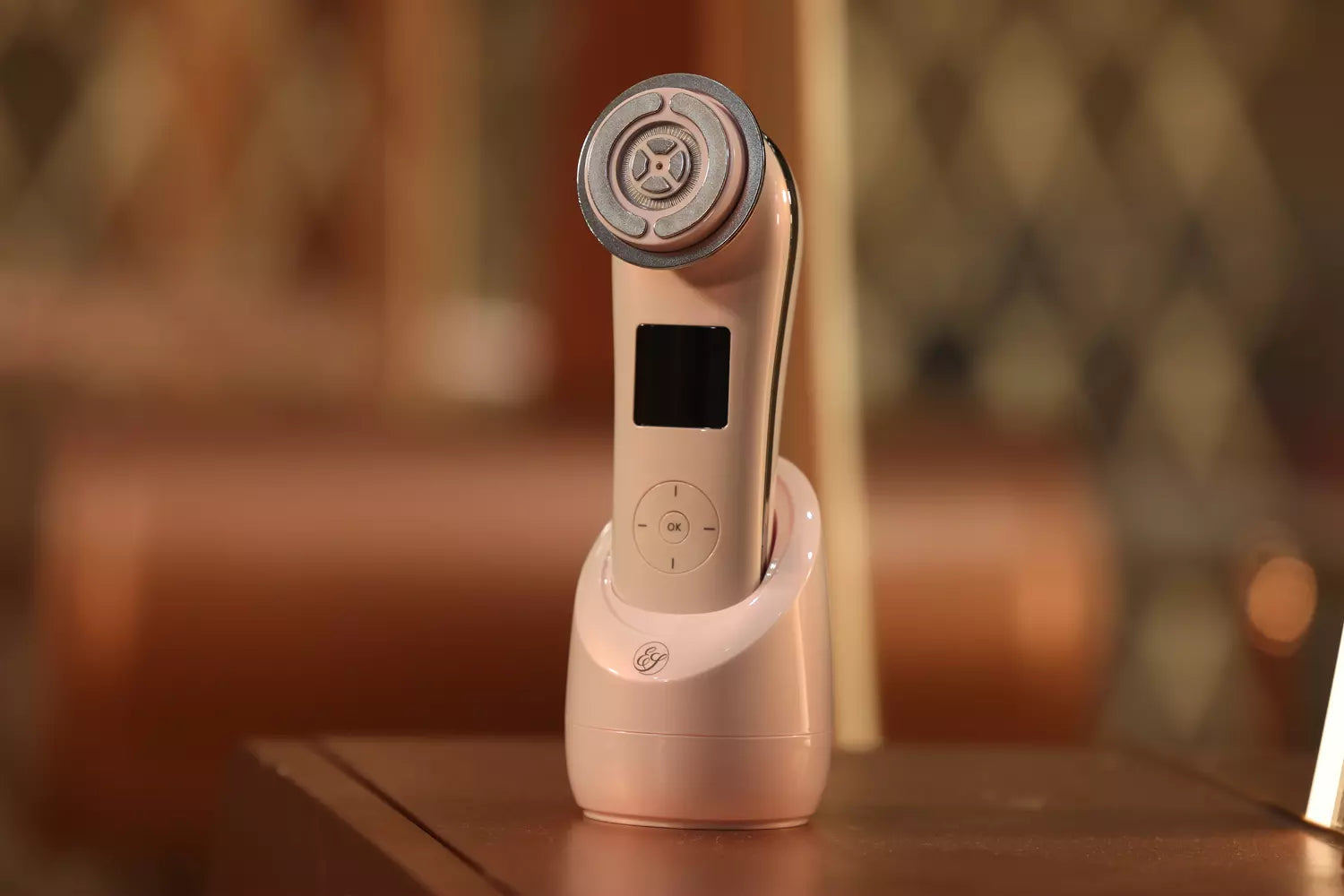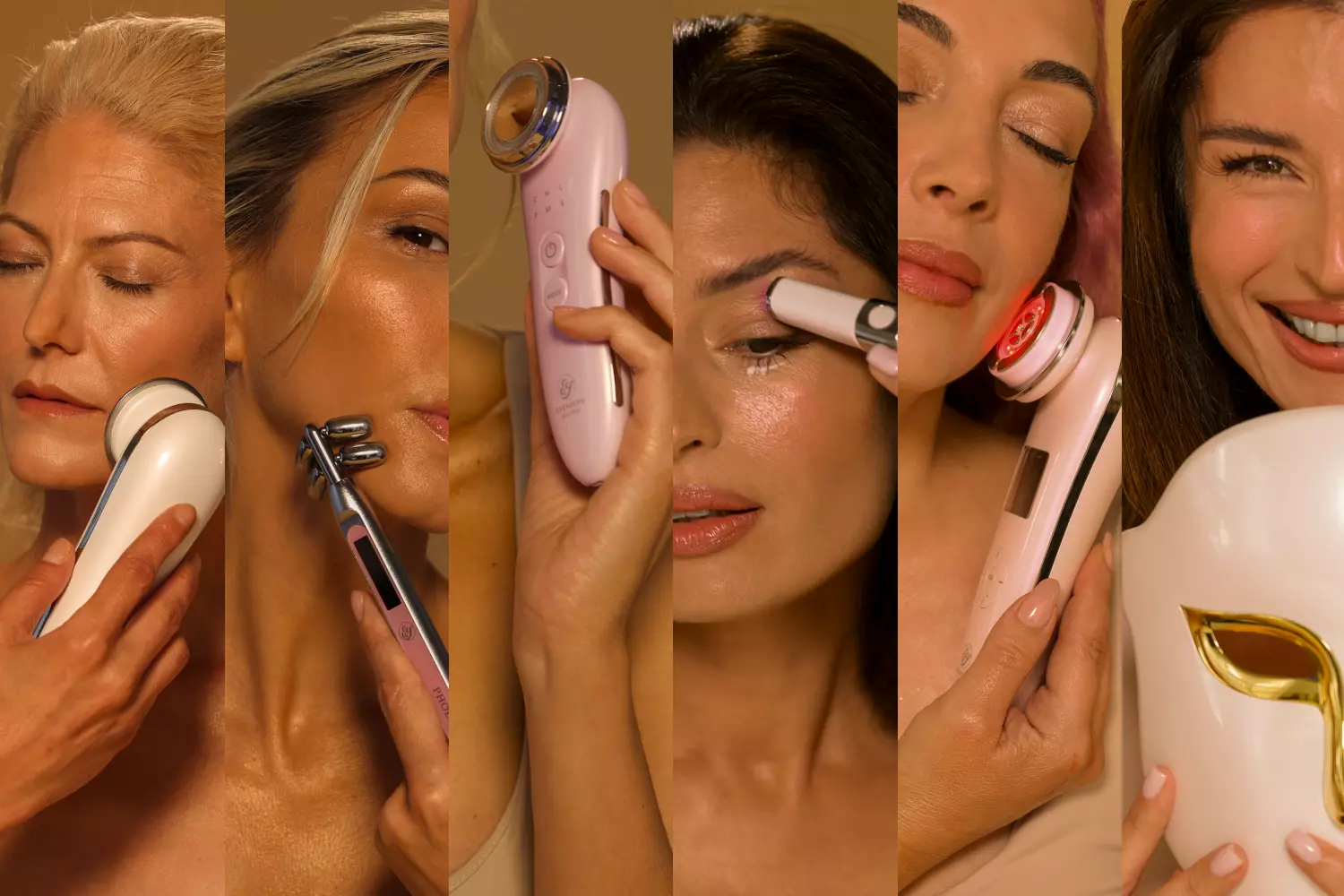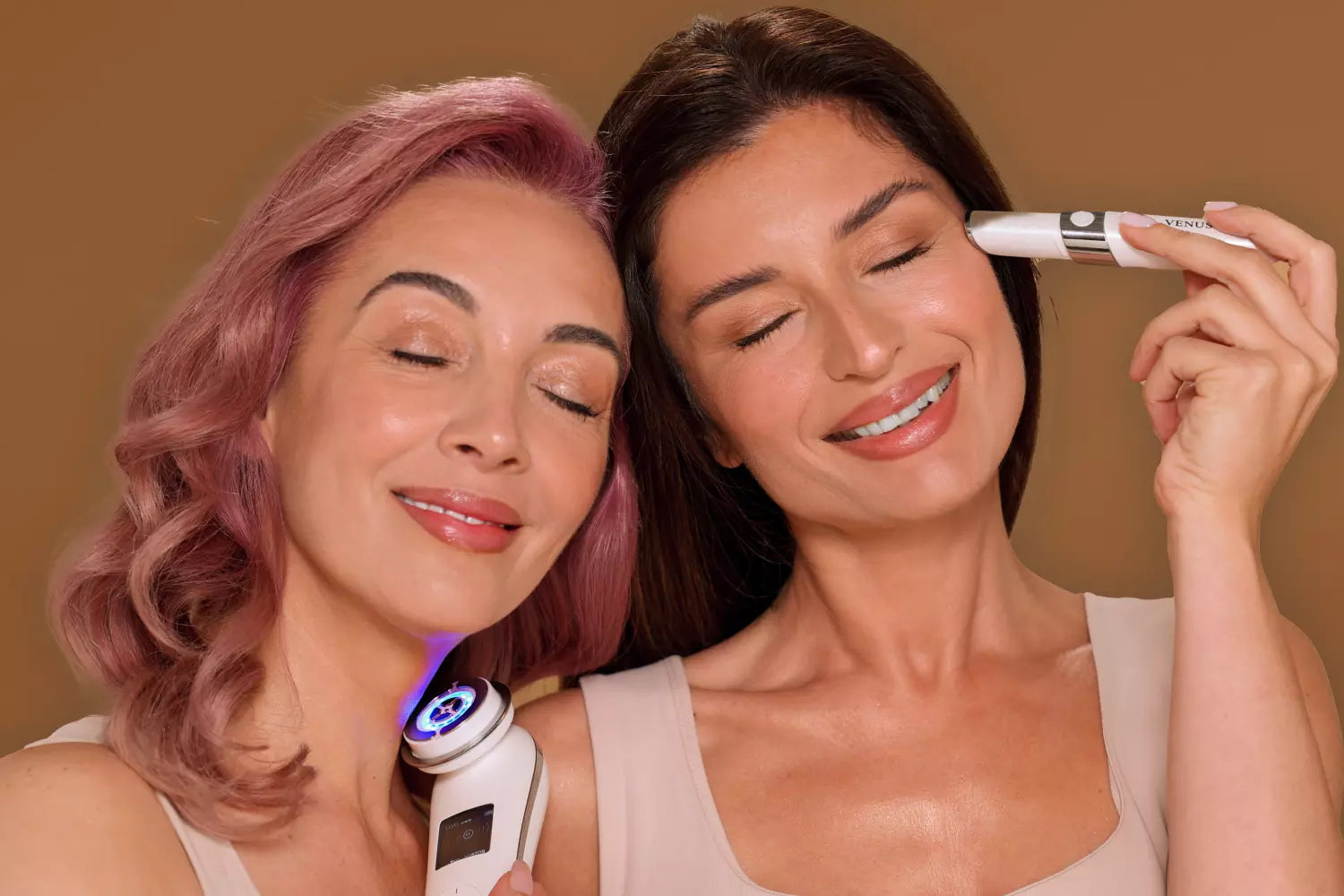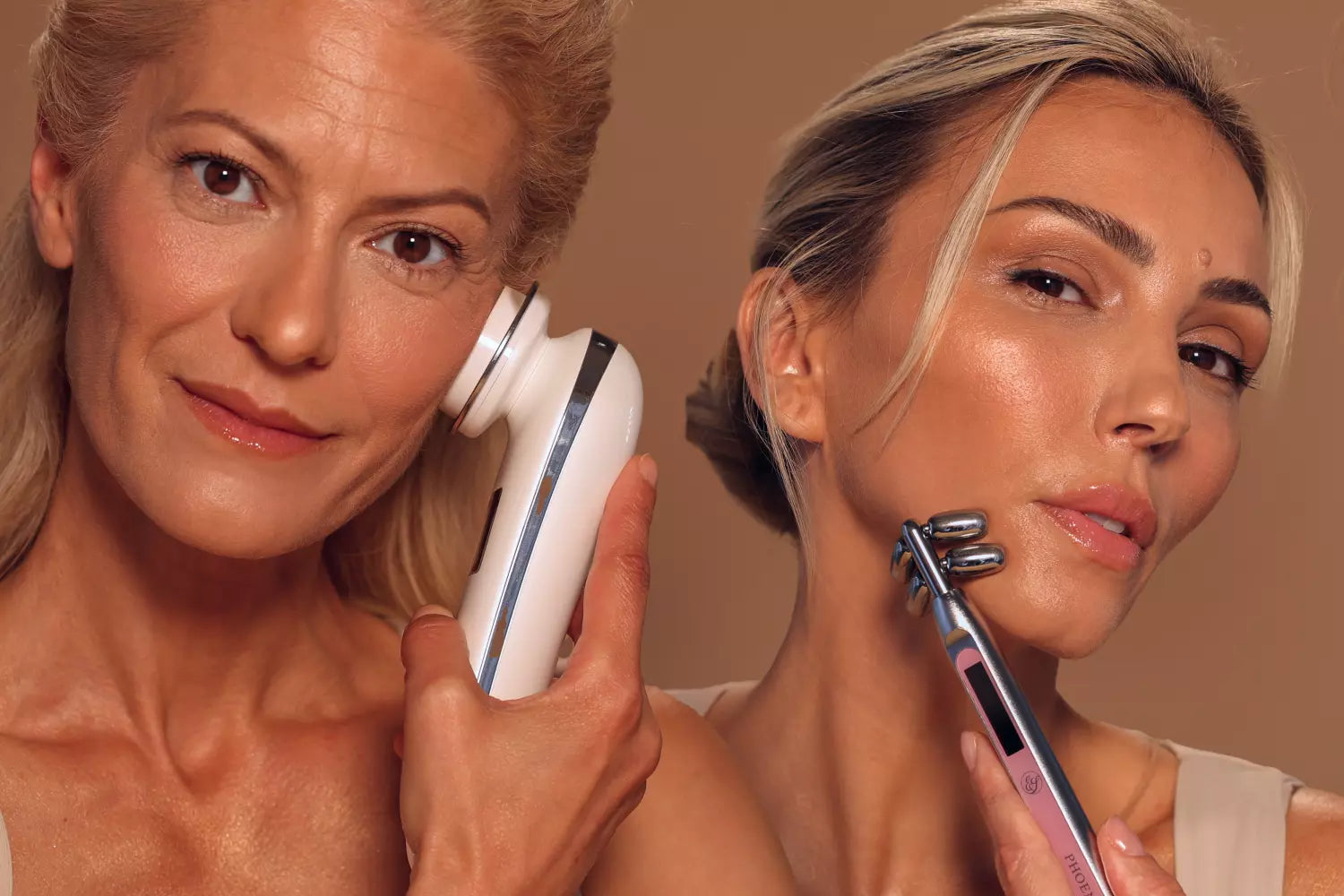Medically Reviewed by Dr. Lisa Hartford, MD
For decades, anti-aging skincare has orbited the same gravitational anchors. Retinoids, vitamin C, hyaluronic acid, and peptides were hailed as the stalwarts, fortified occasionally by buzzworthy plant extracts or reformulated sunscreens. For women navigating their forties, fifties, sixties, and beyond, the goal was to smooth, brighten, hydrate, protect. But as we enter 2025, a different current is sweeping through beauty and dermatology: the rise of biotech-driven regeneration. No longer satisfied with surface brightening or superficial hydration, women are seeking ingredients and interventions that promise to interact with the skin’s own biology, nudging cells into repair mode, prolonging youthful resilience, and rewriting the conversation on aging. At the heart of this renaissance is a trio of innovations—PDRN, exosomes, and neurocosmetics—now joined by cellular energy boosters like NAD, AI-designed peptides, and microbiome reprogrammers. Together, they are shifting the paradigm from cosmetics to regeneration.
PDRN, short for polydeoxyribonucleotide, may sound like something from a molecular biology textbook, but it is increasingly showing up in Korean beauty serums, dermatology clinics, and Western editorials. Derived from fragments of DNA, often from salmon sources, PDRN provides skin with nucleotides, the building blocks cells need to repair and proliferate. The science suggests that PDRN can stimulate fibroblast activity, enhance collagen synthesis, improve microcirculation through angiogenesis, and even calm inflammation via adenosine receptor pathways. For aging skin, which repairs more slowly and tolerates fewer aggressive treatments, this makes PDRN an attractive tool. The “salmon DNA” tag line sounds sensational, but what matters is its regenerative potential. Case studies have documented PDRN accelerating recovery after microneedling, lasers, and peels, while everyday serums are pitched as gentler companions to retinoids, helping skin rebound without irritation.
Yet PDRN is only one facet of the new landscape. Running parallel to DNA-based repair is the surge of exosome-infused skincare. Exosomes, or extracellular vesicles, are tiny packages secreted by cells, carrying proteins, RNA, and lipids that act as messengers to neighboring cells. Think of them as the skin’s internal text message system. In youthful skin, this communication is fluid and efficient; with age, the signal weakens. By applying exosome-derived formulations, scientists and formulators hope to restore the chatter—telling aging fibroblasts to make collagen, reminding keratinocytes to reinforce the barrier, reducing inflammatory cross-talk. In Korea, exosome skin boosters are already paired with in-office treatments, layered after procedures to enhance healing. The challenges remain substantial—standardizing purity, ensuring safety, preventing immune overreaction—but the appeal is undeniable: instead of merely adding moisture or antioxidants, exosomes are about programming the skin’s own cells to behave younger.
Alongside DNA fragments and vesicle messengers comes a third force: neurocosmetics. This may sound esoteric, but it taps into a truth every woman has felt in her skin—how stress, sleep, mood, and hormones show up in complexion. The field of psychodermatology has long recognized that neuropeptides, cortisol, and nerve-skin signaling influence barrier integrity, inflammation, and repair. Neurocosmetics aim to intervene here, using bioactives that calm neurogenic inflammation, modulate stress responses, or even enhance the feel-good neurotransmitters linked to skin comfort. Ingredient developers at major trade shows in 2025 flagged neuro-boosting claims as one of the biggest shifts in beauty, signaling that emotional well-being and skin biology can no longer be separated. For aging women, this is particularly relevant. Menopause, caregiving stress, sleep disruption, and hormonal fluctuations all leave fingerprints on the skin. Neurocosmetics promise to soften that imprint.
If PDRN, exosomes, and neurocosmetics form the leading edge of the regenerative conversation, cellular energy boosters are emerging right behind them. The buzzwords here are NAD+ and NMN. NAD+ is a coenzyme essential for cellular metabolism and DNA repair. With age, NAD+ levels decline, slowing recovery and fueling oxidative stress. Topical NAD boosters, along with oral supplements, are being marketed as ways to recharge skin cells, giving them the energy to rebuild, resist, and regenerate. Scientific hurdles remain—NAD is unstable and struggles to penetrate the skin—but new delivery systems such as liposomes and nanocarriers are promising. For women whose skin feels sluggish, who notice longer healing times and a duller resilience, NAD supplementation is marketed as an internal battery pack for their cells.
Peptides, long a staple of anti-aging skincare, are also undergoing reinvention. Instead of relying on naturally occurring fragments or broad collagen stimulators, biotech firms are now designing peptides in silico. AI-driven peptide discovery allows labs to predict molecular structures that bind specific receptors in the skin, triggering precise effects—from reducing neurogenic inflammation to selectively stimulating elastin. Combined with precision fermentation, these peptides can be produced sustainably, without animal or plant harvesting. For consumers, the result is not just “a peptide cream,” but a portfolio of designer peptides customized to target different signs of aging at different life stages. This precision is a far cry from the one-size-fits-all formulas of the past.
Then there is the microbiome, once a peripheral talking point, now central. Barrier function and microbial balance are inseparable. Aging skin often experiences both barrier thinning and microbiome shifts, making it more reactive, drier, and prone to inflammation. The next wave of microbiome skincare emphasizes postbiotics and biofermented metabolites—stable, safe, and regulatory-friendly, unlike the live probiotics that were once trendy. These ingredients can signal keratinocytes to strengthen tight junctions, reduce trans-epidermal water loss, and restore microbial harmony. For older women, this is foundational. Without a strong barrier and balanced microbiome, no amount of PDRN or NAD will perform optimally.
Threaded through all of this is delivery technology. The most potent active is useless if it cannot reach its target. That is why 2025 is also the year of smart carriers, nanoplatforms, and triggered release. Some systems are designed to respond to skin pH, temperature, or enzymes, releasing actives only when and where they are needed. Universities are filing patents for eco-friendly nanoplatforms that stabilize fragile molecules without toxic solvents. In some cases, fabrics and wearable patches infused with microcapsules release actives gradually in response to body heat and humidity. For aging skin, which is both more sensitive and less efficient at absorption, such intelligent delivery systems may make the difference between irritation and transformation.
All of these innovations—DNA fragments, exosomes, neurocosmetics, NAD boosters, AI peptides, microbiome postbiotics, nanocarriers—are converging into a new paradigm for aging skin. The paradigm shift is profound. Instead of focusing on symptom relief, like masking fine lines or adding surface glow, the emphasis is now on regeneration, resilience, and latency extension. The goal is not only to look smoother today but to extend the period during which skin functions as if it were younger. For women who want more than fleeting cosmetic cover, this signals an era where skincare aspires to slow the biological clock.
Practically speaking, what does this mean for routines in 2025? It means women can begin to build regenerative “stacks” that rotate through repair cycles. On one night, a serum containing PDRN might be layered after a retinoid, soothing and supporting the repair triggered by vitamin A. Another night might be dedicated to exosome or NAD boosters, emphasizing cellular energy and intercellular communication. A rest night might focus on barrier repair with microbiome-friendly postbiotics and neurocosmetic actives to reduce stress signaling. For those undergoing procedures like microneedling, professional-grade PDRN or exosome boosters can be used post-treatment to accelerate healing. Over time, this cycle prevents overstimulation, builds resilience, and layers different regenerative pathways without overwhelming the skin.
The risks are not trivial. Because these are biologically active agents, long-term safety data is still limited. Variability in sourcing and purity makes one brand’s PDRN serum very different from another’s. Exosomes in particular face regulatory scrutiny, as their potency and biological activity raise questions about classification. NAD and NMN are unstable and may degrade before reaching their targets. Overzealous layering of multiple regenerative actives could overwhelm skin or provoke inflammation. And as with all beauty trends, hype can outpace evidence. That is why dermatologists urge caution: introduce innovations gradually, monitor your skin’s response, and always maintain the fundamentals—sunscreen, barrier support, antioxidants, and hydration.
But the opportunities are exciting. Imagine a fifty-five-year-old woman whose skin feels fragile and slow to recover after treatments. With a regimen that integrates PDRN to accelerate DNA repair, exosomes to reinvigorate communication, NAD boosters to energize cells, and microbiome postbiotics to restore barrier, her skin could not only look more luminous but function more resiliently. Imagine a sixty-year-old whose menopause-driven dryness and reactivity is buffered by neurocosmetic actives that calm stress-related inflammation, combined with AI-engineered peptides designed specifically to stimulate elastin. For these women, skincare is no longer about chasing trends but about tapping into biotechnology that meaningfully improves quality of life.
The biotech renaissance in beauty is still unfolding. Some of these innovations will endure, others may fade, but together they represent a decisive shift in how we understand skincare for aging women. It is no longer just cosmetics, it is biology. The lines between dermatology, aesthetics, biotechnology, and consumer beauty are dissolving. For those willing to explore carefully, the rewards may be a future where age is not denied but where skin is supported to age with grace, resilience, and vitality.
Citations
“Polydeoxyribonucleotide: A promising skin anti-aging agent,” ScienceDirect (2022)
https://www.sciencedirect.com/science/article/pii/S2096691122000723
Cosmopolitan, “What is PDRN skincare and does salmon DNA really work?” (2025)
https://www.cosmopolitan.com/style-beauty/beauty/a65911695/pdrn-skincare
Glamour, “The best PDRN serums, according to dermatologists” (2025)
https://www.glamour.com/gallery/best-pdrn-serums
Marie Claire, “PDRN: the new K-beauty ingredient for 2025” (2025)
https://www.marieclaire.com/beauty/pdrn-skincare-benefits
Byrdie, “Trending skincare ingredients in 2025” (2025)
https://www.byrdie.com/trending-ingredients-2025-11772178
BeautyMatter, “The biggest ingredient trends from In-Cosmetics 2025”
https://beautymatter.com/articles/the-biggest-ingredient-trends-from-in-cosmetics-2025
Covalo, “The longevity triad: exosomes, PDRN, and neurocosmetics” (2025)
https://blog.covalo.com/personal-care/longevity-triad-exosomes-pdrn-neurocosmetics-changing-the-skincare-game
American Beauty Show, “Top skincare trends to watch in 2025”
https://www.americasbeautyshow.com/blogs/in-the-loop/the-top-skincare-trends-to-watch-in-2025
GCI Magazine, “High-performance biotech: the future of beauty innovation”
https://www.gcimagazine.com/ingredients/skin-care/article/22947205/highperformance-biotech-the-future-of-beauty-innovation
MW Bioprocessing, “Biotech and the future of beauty”
https://mwbioprocessing.com/blog/biotech-and-the-future-of-beauty
The Verge, “L’Oréal debuts Cell BioPrint at CES 2025”
https://www.theverge.com/2025/1/6/24334941/loreal-cell-bioprint-ces-2025-skincare-beauty-tech
Times of India, “PU files patents for green nanoplatform in skincare” (2025)
https://timesofindia.indiatimes.com/city/chandigarh/pu-files-patents-for-green-nanoplatform-in-skincare-and-pharma/articleshow/121241544.cms









Leave a comment
All comments are moderated before being published.
This site is protected by hCaptcha and the hCaptcha Privacy Policy and Terms of Service apply.